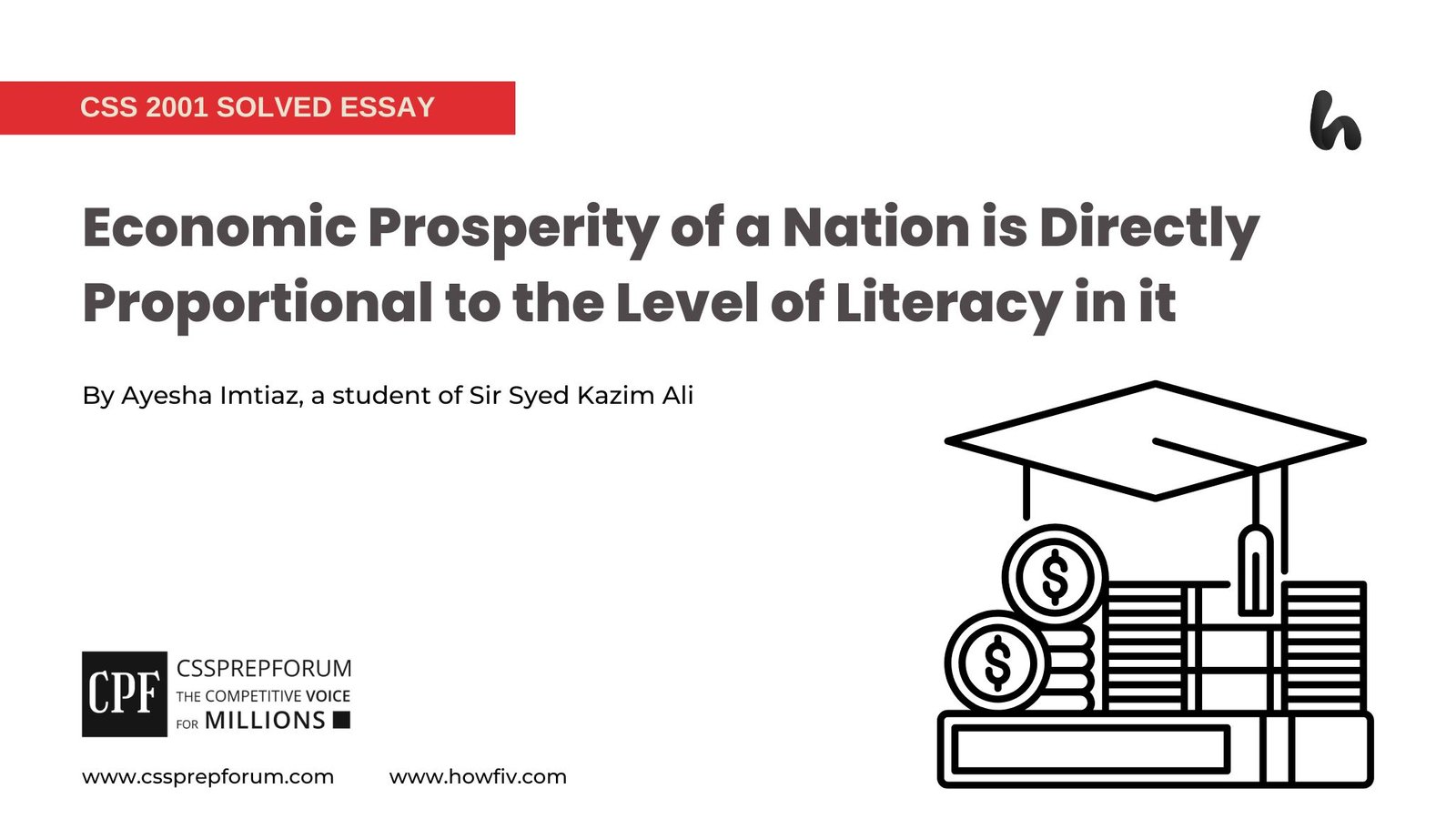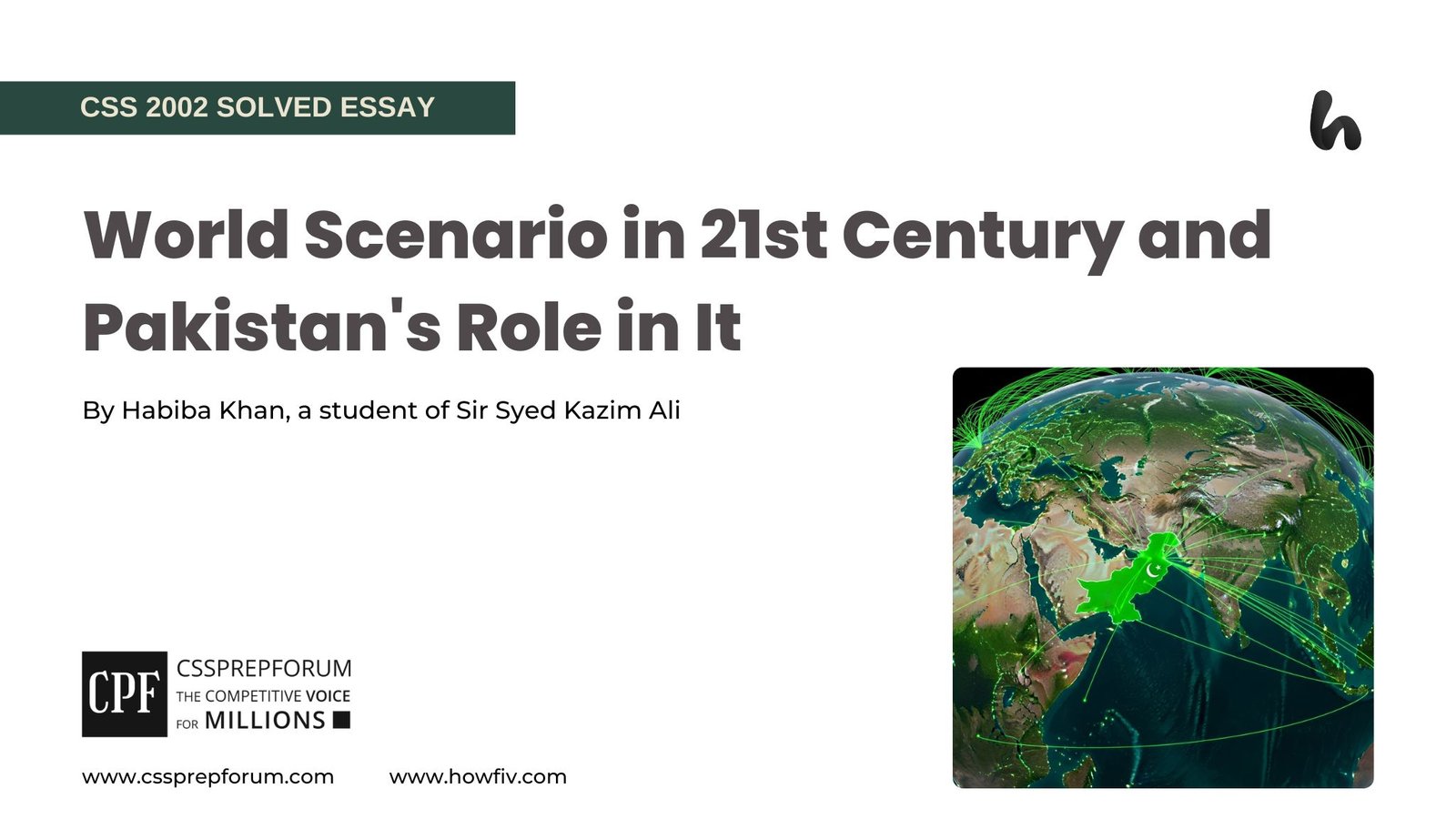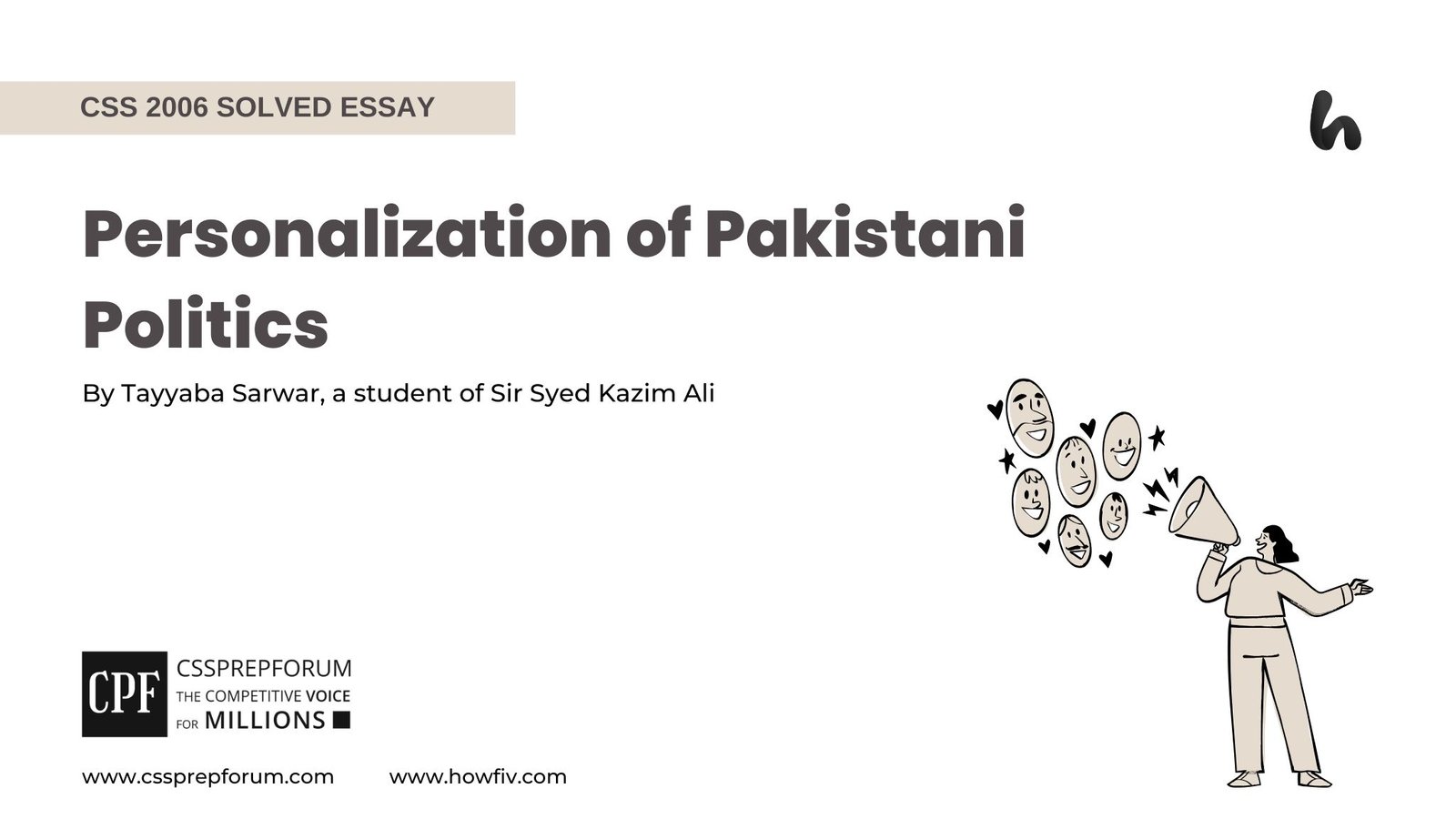Gender and Socio-economic Development | Editorials by CSS & PMS Aspirants
The following article, “Gender and Socio-economic Development”, is written by Hadia Ali, a student of Sir Syed Kazim Ali. Moreover, the article is written on the same pattern, taught by Sir to his students, scoring the highest marks in compulsory subjects for years. Sir Kazim has uploaded his students’ solved past paper questions so other thousands of aspirants can understand how to crack a topic or question, how to write relevantly, what coherence is, and how to include and connect ideas, opinions, and suggestions to score the maximum.

A nation’s progress is measured by the strength of its workforce, its policies’ equity, and its development model’s inclusivity. Yet despite decades of advocacy, the marginalization of women continues to undermine socio-economic growth. Indeed, from restricted access to education and healthcare to the persistent gender pay gap, systemic inequalities have entrenched themselves in economic and social structures. Therefore, this exclusion is a moral failure and an economic miscalculation that hampers national productivity, innovation, and progress.

Heading straight to the fundamental truth, recognizing howthe neglect of women in the economic, educational, and social spheres obstructs a country’s socio-economic development is essential.
1-The Economic Toll of Patriarchy
At its core, patriarchal dominance in many societies directly translates into economic stagnation. Indeed, nations that limit women’s participation in the workforce experience lower GDP growth as half of their potential workforce remains under-utilized. For instance, according to the World Economic Forum’s Global Gender Gap Report, reducing gender disparity in labor force participation can add $28 trillion to global GDP by 2025. Furthermore, countries like Pakistan, where cultural norms discourage female employment, report some of the lowest female labor force participation rates, ultimately slowing economic expansion. On the other hand, economies like Norway and Sweden, which prioritize gender equality, have reaped the benefits of higher productivity and sustainable development. Thus, a society’s decision to embrace or restrict female workforce participation directly influences its economic trajectory.
2-Education, The Foregone Investment
Likewise, limiting women’s access to education in countries further deepens economic inequality. More importantly, when societies restrict women’s education, they are choosing underdevelopment for themselves. According to the World Bank, every additional year of schooling for girls increases a nation’s GDP by 0.3 per cent. Therefore, nations that fail to invest in female education deliberately hinder their economic growth. Unfortunately, in patriarchal societies, education is often reserved for boys, reinforcing gender-based economic dependency. For example, in rural South Asia and Sub-Saharan Africa, millions of girls are forced to drop out of school due to early marriage or domestic responsibilities. However, countries that prioritize girls’ education, such as Finland and Canada, consistently outperform others in innovation and economic competitiveness. Thus, an educated female population not only fosters individual empowerment but also cultivates a skilled workforce capable of driving national progress.
3-Healthcare Disparities and Economic Consequences
Besides education, another crucial issue is the denial of healthcare access to women, which has profound socio-economic repercussions on nations. According to the Global Women’s Health Index, over 1.5 million women lack access to essential healthcare services worldwide, which leads to higher maternal mortality rates and declines in workforce participation. Conversely, countries that prioritize women’s healthcare -such as Sweden, where maternal care is fully state-funded – demonstrate lower mortality rates and stronger economic resilience. Hence, neglecting women’s health is not a public health crisis; instead, it is an economic failure with lasting consequences.
4-The Gender Pay Gap
Next, economic discrimination persists in the form of the gender pay gap, which continues to hinder financial stability for women. According to the World Economic Forum, women earn 20% less than men for the same work. And this wage disparity discourages female workforce participation and reduces household income, which ultimately affects national consumption patterns and economic growth. In contrast, in countries like Iceland – where wage transparency laws have been implemented – the gender pay gap has significantly narrowed, contributing to a more dynamic and inclusive economy. Thus, addressing the gender pay gap is not merely a question of fairness but a fundamental requirement for economic efficiency and sustainable growth.
5-Cultural and Religious Barriers to Female Inclusion
Lastly, cultural and religious traditions continue to reinforce gender roles that limit women’s participation in public and professional life. Specifically, in some conservative communities, societal norms dictate that women remain caregivers while men dominate professional and leadership spaces. As a result, such restrictive mindsets not only hinder female empowerment but also stifle economic innovation by limiting diverse perspectives in policymaking and business leadership. Nevertheless, countries that have successfully reformed such traditional constraints, like Rwanda – which has the highest percentage of women in Parliament that is 61 per cent – have stronger governance and more inclusive economic policies. Therefore, societies that fail to modernize their cultural frameworks risk falling behind economically while those that embrace inclusivity witness accelerated growth and prosperity.
The Case for Cultural Preservation
However, some critics argue that maintaining traditional gender roles is essential for preserving cultural identity and societal stability. Specifically, they claim that prioritizing economic advancement over established social structures can lead to the erosion of cultural values. For instance, conservative critics suggest that increased female workforce participation disrupts family stability and diminishes the role of men as primary providers. However, this argument overlooks the fact that gender inclusion does not mean dismantling traditional values but instead adapting them to modern economic realities. Moreover, many cultures, such as those in Southeast Asia, have successfully integrated women into the economy without compromising their cultural heritage. Thus, gender inclusion and cultural preservation in society are mutually exclusive and complementary when balanced thoughtfully.
Economic Inclusion vs. Economic Burden
Similarly, another counterargument suggests that integrating women into all economic sectors requires significant financial investment in education, healthcare, and workplace restructuring. In fact, critics contend that providing maternity benefits, equal pay, and gender-sensitive policies places an undue financial burden on businesses and governments. Nevertheless, studies indicate that gender-diverse companies consistently outperform their competitors financially while countries with higher female workforce participation experience stronger economic growth. Therefore, although the initial costs of gender inclusion may seem significant, the long-term economic benefits – including higher productivity, greater innovation, and a more balanced workforce – far outweigh these short-term expenditures.
Considering all these factors, a country cannot achieve sustainable growth while sidelining half its population. More importantly, gender inclusivity is not just a feminist ideal but an economic necessity. As seen in global economic trends, societies that empower women through education, healthcare, and workforce inclusion witness higher GDP growth; improved governance; and stronger public health indicators. Therefore, nations must make a critical choice: either perpetuate economic inefficiency by suppressing female participation or embrace gender equality as the foundation for national progress. Ultimately, the latter path leads to a more prosperous, innovative, and equitable future.

CSS Solved Past Papers’ Essays
Looking for the last ten years of CSS and PMS Solved Essays and want to know how Sir Kazim’s students write and score the highest marks in the essays’ papers? Then, click on the CSS Solved Essays to start reading them.
CSS Solved Essays
CSS Solved General Science & Ability Past Papers
Want to read the last ten years’ General Science & Ability Solved Past Papers to learn how to attempt them and to score high? Let’s click on the link below to read them all freely. All past papers have been solved by Miss Iqra Ali & Dr Nishat Baloch, Pakistan’s top CSS GSA coach having the highest score of their students. General Science & Ability Solved Past Papers












